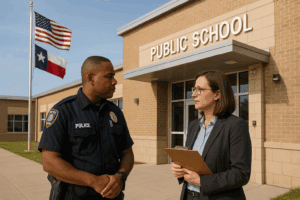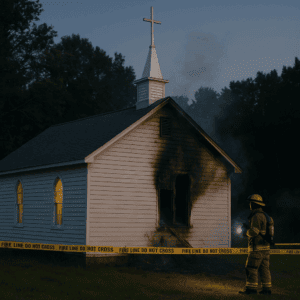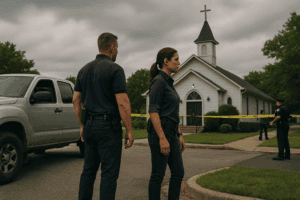What is HB 33?
Disclaimer: This article is for informational purposes only. It does not constitute legal advice. Entities should consult with legal counsel to ensure full compliance with HB 33.
House Bill 33 establishes new statewide requirements for law enforcement agencies that serve public schools, focused on readiness, training, tactical gear, and interagency coordination.
It applies to:
- Municipal police departments
- County sheriff’s offices
- ISD police departments
The deadline to comply is September 1, 2025. Agencies must verify that assigned officers are trained, equipped, and integrated into school safety plans.
Required Policy Changes
Active Shooter Response Policy
Under Code of Criminal Procedure Article 2A.067, every law enforcement agency that responds to schools must have an active shooter response policy.
Your policy must:
- Follow ALERRT doctrine as the statewide standard
- Allow for solo-officer entry when appropriate
It’s recommended that your policy also reference:
- Immediate interdiction (engaging the threat without delay)
- Threshold assessment (evaluating the scene before entry)
- Team entry when more officers are available
This isn’t optional. Your policy must be current and aligned with the law before the September 1 deadline.
Training Requirements
| Course | Who Takes It | Frequency |
|---|---|---|
| ICS-100 & NIMS-700 (FEMA) | All officers | Once, pre-service or lateral hire |
| ALERRT SORD or equivalent | All sworn officers assigned to school response | Initial + sustainment every 18 months |
- Document via TCLEDDS and agency LMS
- Retain rosters and course outlines for audit purposes
Tactical Equipment Requirements (§ 370.012)
Minimum Gear Availability
Law enforcement agencies must ensure that critical tactical gear is available to a minimum number of officers, specifically, 20% of sworn personnel or at least 5 officers, whichever number is greater.
Each of those officers must have access to the following:
- Rifle chambered in 5.56 with an optic and weapon light
- Level IV ballistic plates with carrier
- Ballistic shield rated to stop rifle rounds
- Breaching tools, such as a Halligan bar or breaching shotgun
- IFAK (Individual First Aid Kit) with:
- Tourniquet
- Hemostatic gauze
- Chest seal
- Medical gloves
This gear must be operational, readily deployable, and documented in agency readiness files.
Gear Sharing Option
If your agency doesn’t meet the 5-officer threshold or lacks the budget for full equipment sets, HB 33 allows gear sharing via mutual-aid agreements.
You must:
- Enter a signed MOU with a nearby agency that has the required gear
- List all shared equipment and the officers who can access it
- Keep a copy of the agreement on file for compliance and audits
Campus Integration
Agencies must actively partner with school districts to align emergency planning, drills, and tactical response.
Key responsibilities include:
Drill Collaboration
Participate in and contribute to planning the district’s required annual full-scale safety drill. This includes scenario development, role assignments, and post-drill review.
Construction Security Reviews
While not mandated by HB 33, law enforcement agencies are strongly encouraged to assist districts with mandatory security reviews under § 37.1087.
These reviews evaluate vulnerabilities during active shooter scenarios and verify compliance with TEA, TxSSC, and DPS standards.
Assigning a representative to support security reviews enhances campus safety and ensures operational alignment.
SRO Protocol Training
Ensure all school-based officers are trained not just in general response, but also in district-specific emergency protocols. This includes familiarity with site maps, door access systems, campus language/terminology, and internal alert procedures.
Expanded Drill Scenarios
When participating in drills, include elements such as parent-student reunification, coordinated radio communications across agencies, and EMS staging. These components reflect real-world complexity and help identify operational gaps before a crisis.
Funding Opportunities
HB 33 Accreditation Grants
Law enforcement agencies may be eligible for HB 33 Accreditation Grant funding to support school safety readiness.
The grant provides:
- $25,000 for first-time LEA accreditation
- $12,500 for accreditation renewals
Funds can be used to purchase required tactical equipment, support officer training, acquire breaching tools, or establish shared storage solutions for mutual-aid use.
Agencies should maintain clear documentation of how funds are spent, including receipts, gear inventories, and training certifications, to ensure audit readiness.
Documentation & Deadlines
To demonstrate compliance with HB 33, law enforcement agencies must track key records across training, equipment, and interagency coordination.
Use the table below to ensure documentation is timely and audit-ready:
| Item | Where to Record | When |
|---|---|---|
| Training certs | TCLEDDS, LMS | Immediately post-course |
| Policy updates | Department policy manual | Before Sept 1 |
| Gear inventory | Internal database; grant folder | Q3 2025 |
| MOUs | Shared folder, signed by chiefs | Before first drill |
| Drill AAR | Stored with partner ISD’s audit docs | Annually |
Timeline to Compliance
Use the following quarter-by-quarter breakdown to stay on track with key HB 33 requirements ahead of the deadlines:
Quarter What Must Be Done Q4 2025 Law is in effect. Agencies must be fully compliant: policy finalized, gear on-hand, MOUs executed, officers trained (ICS-100, NIMS-700, ALERRT/SORD), records documented. Q1 2026 Conduct full-scale integrated drill with ISD. Capture AAR. Q2 2026 Close any training or gear gaps. Finalize documentation in TCLEDDS. Ongoing Maintain sustainment training (every 18 months), update policies as needed, and document all drills and coordination.
Key Takeaways
- HB 33 holds law enforcement agencies directly accountable for active shooter preparedness, training compliance, and tactical gear availability.
- Noncompliance isn’t just an audit risk—it creates legal exposure and public scrutiny, especially in the post-Uvalde environment.
- Success requires proactive planning, tight documentation, and a committed partnership with your district. Don’t wait for the deadline.
Ready to Get Compliant?
Risk Strategy Group can help your agency:
- Audit and align active shooter policies to meet HB 33 and ALERRT standards
- Verify and document officer training for audit-readiness and grant eligibility
- Build and inventory required tactical gear to meet minimum standards
- Coordinate and document full-scale drills with school partners
- Prepare accreditation packets for the $25,000 HB 33 grant opportunity
The September 1 deadline is closing in. Let’s get ahead of it.
Authored July 2025; reflects HB 33 as implemented in TAC §370.012 and §2A.067






